A Prominent Black Mask Is Starkly Juxtaposed By Vibrant Yellow And Pristine White Eyeliner!
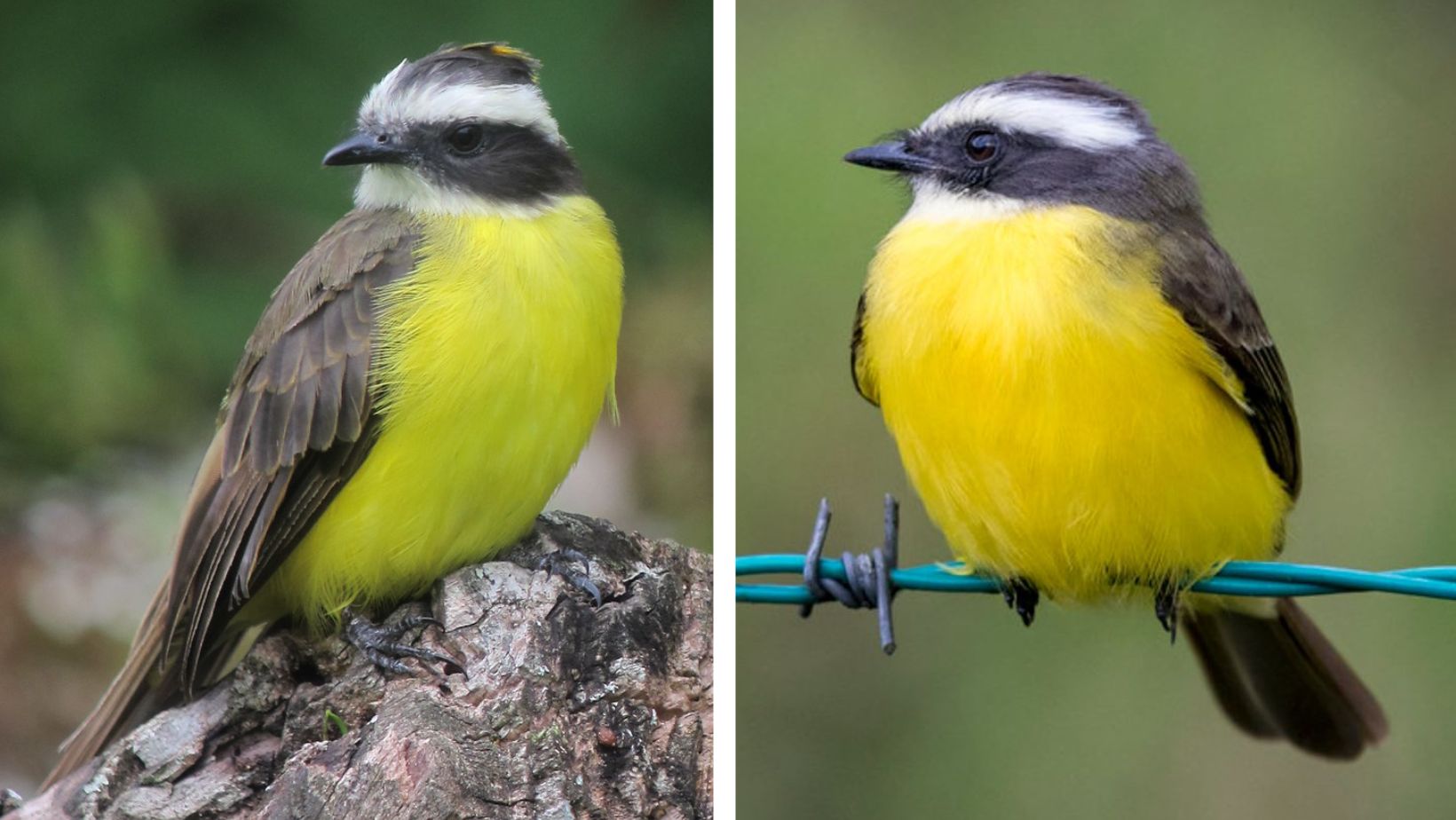
A bird characterized by its petite bill that is bird is prevalent in tropical and subtropical regions.
Meet the Social Flycatcher:
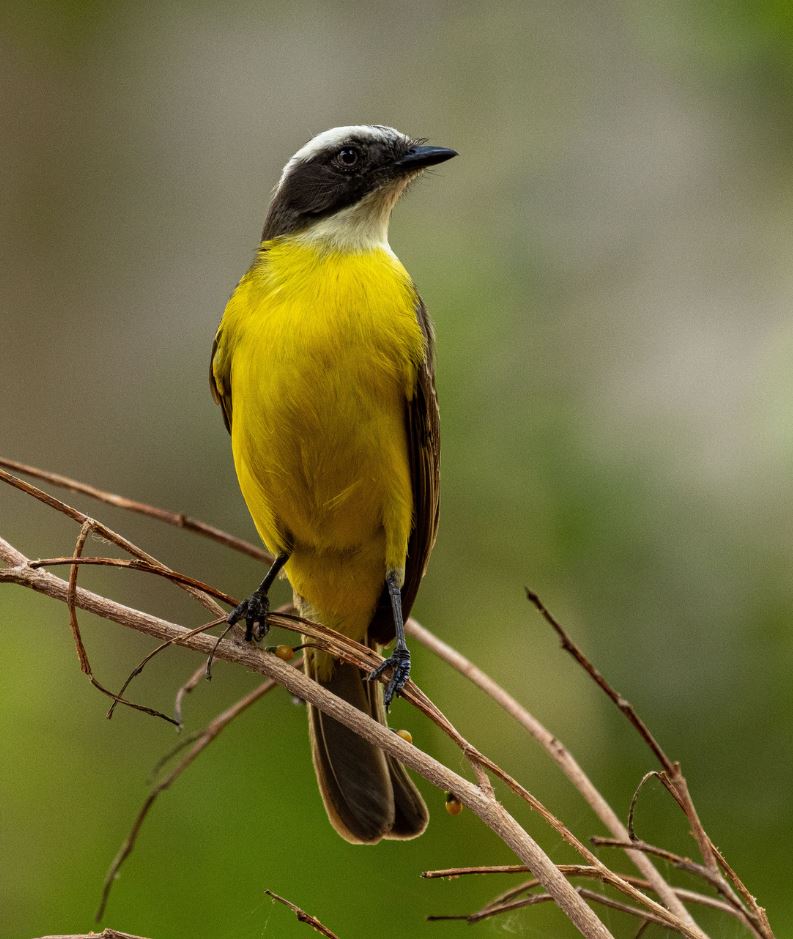
Description: The social flycatcher (Myiozetetes similis) is a passerine bird is resembling a smaller boat-billed flycatcher or great kiskadee, the adult social flycatcher measures 16–18 cm (6.3–7.1 in) in length and weighs 24–27 g (0.85–0.95 oz). It features a dark grey head with a distinct white eyestripe and an often hidden orange to vermilion crown stripe. Olive-brown upperparts, brown wings and tail with subtle rufous fringes, yellow underparts, and a white throat complete its appearance.
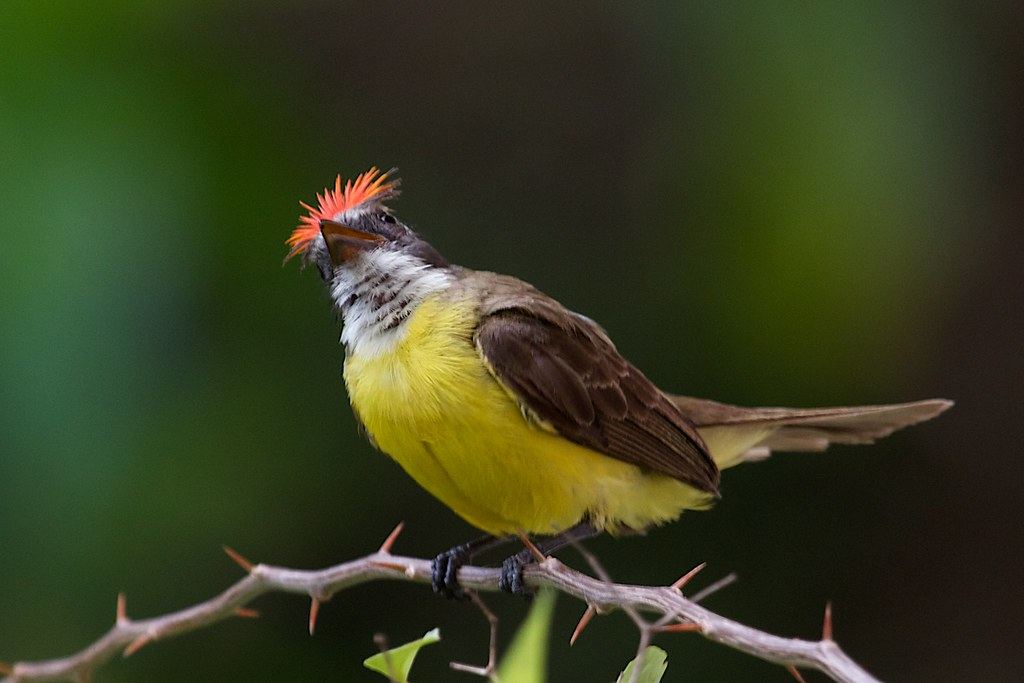
Young birds display a lighter eye mask, reduced crown stripe, and chestnut fringes on wing and tail feathers.
Related reading:
– Striking In Every Respect, This Bird’s Most Intriguing Feature Has To Be The Subtle Pink Wash On The Belly Along With A Hot Pink Mask!
Its call is a sharp peeurrr, while the dawn song is a chips-k’-cheery.

Distribution: It is sometimes classified into two species: the social flycatcher (Myiozetetes texensis), inhabiting areas from Costa Rica northwards to Mexico, and the vermilion-crowned flycatcher (M. similis proper), found from southwest Costa Rica across South America.

Range and ecology: Social flycatchers breed in plantations, pastures with scattered trees, and open woodlands across a vast range from northwestern Mexico to northeastern Peru, southern Brazil, and northwestern Argentina.
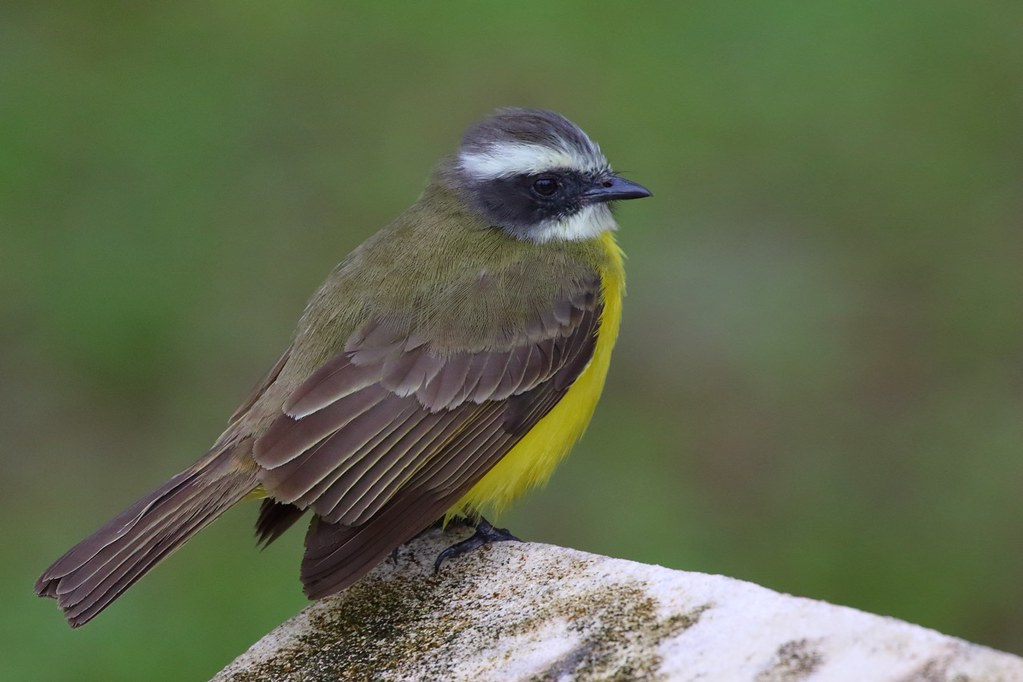
Diet: They prefer perching openly in trees several meters above ground, from where they launch sallies to catch insects in flight, employing various aerobatic maneuvers. Hovering and gleaning for prey and small berries, including those from gumbo-limbo trees, are common feeding behaviors. They also feed on ground prey and occasionally enter shallow waters for aquatic invertebrates, tadpoles, and small fish. Remarkably, they have been observed foraging alongside common marmosets, potentially cooperating with them in finding prey.
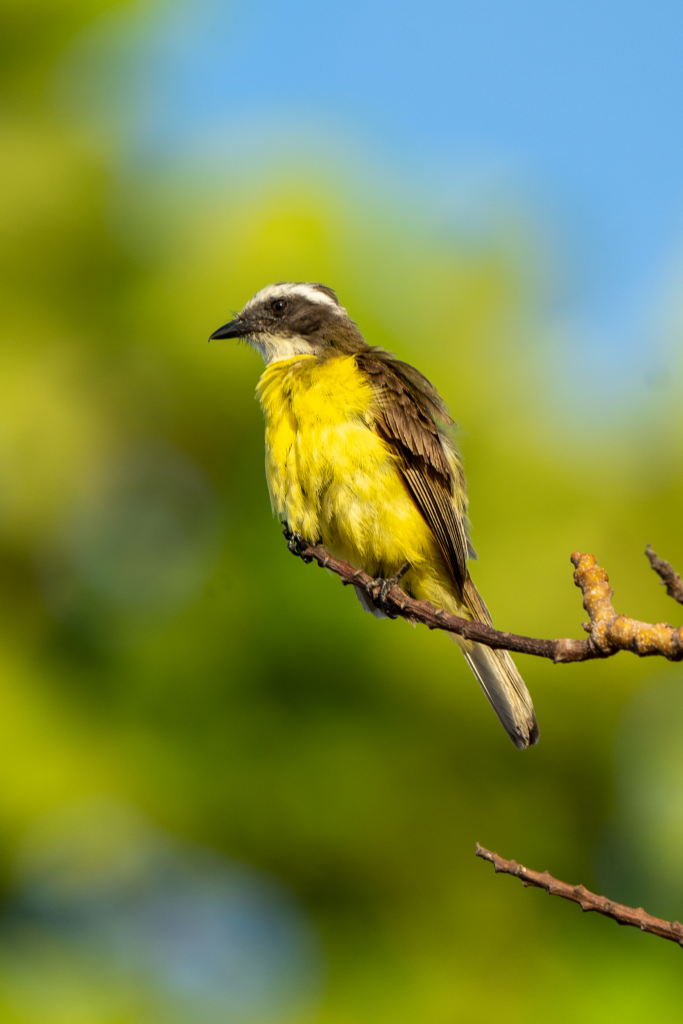
Nesting: Nests, constructed by females in bushes, trees, or on buildings, are large roofed structures made of stems and straw, often built near wasp, bee, or ant nests, or the nests of other tyrant flycatchers. Clutches typically contain two to four brown- or lilac-blotched cream or white eggs, laid between February and June.
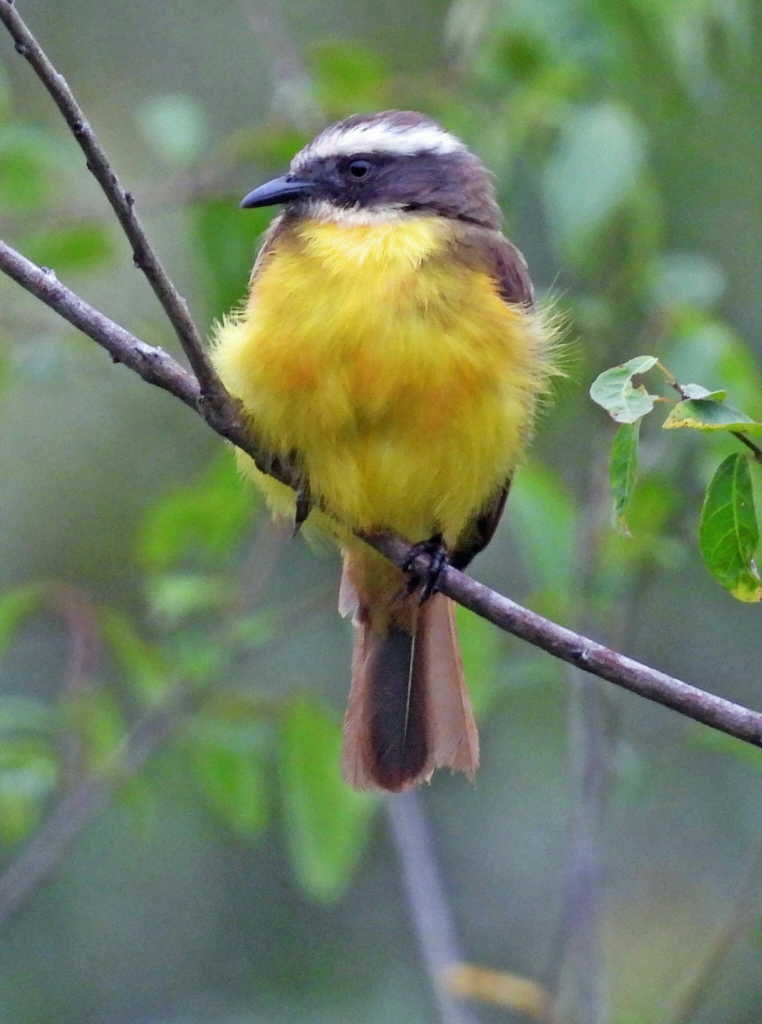
Status: They are common and widespread, not considered threatened by the IUCN.

Watch this bird in the video:
This article uses material from Wikipedia.org which is licensed under the GNU Free Documentation License via Copyright Wikipedia. Images on this page are the sole property of the photographers (unless marked as Public Domain). Please read the license and or contact the photographers directly before using them for any purpose. Thank you all.
This Multifaceted, Shimmering Flying Emerald, Is Nothing Short Of A Brilliant Flying Gem!
Please SHARE this article with all your bird-loving friends and family.






